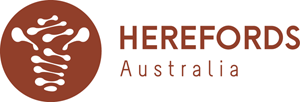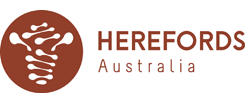Hereford bulls have been selected to inject butt shape, fat cover and eating quality in a crossbreeding program using Droughtmaster and Charmaster cows in northern Queensland.
Mac and Gayle Shann run a breeding herd of 1000 females at Cantaur Park Droughtmasters, northeast of Clermont, and run comparative crossbreeding trials to produce tropically adaptable flatbacks with superior carcase traits.
The couple has a crossbreeding program using 300 cows joined to either Hereford or Charolais bulls, and 170 Charmaster (Charolais/Droughtmaster) cows joined to Droughtmaster, Hereford or Shorthorn bulls.
Their 11,000ha property is set in a 650mm rainfall zone and comprises loamy river, sodic clay, and lighter Ironbark soil types.
Mac and Gayle invested in three Hereford bulls in 2022, including Tycolah and Mountain Valley bulls Terry R017 for $46,000 and Tycolah Uralla for $14,000, to inject butt shape, fat cover and eating quality.
“We are running a trial to compare differences in meat quality – we do enter quite a few carcase competitions for the chiller feedback,” Mr Shann said.
“We were looking for a bull carrying the right amount of meat and were open minded about the breed as there are really good cattle in every breed.
“I look through thousands of bulls every year and what really caught my eye was (Tycolah Terry) who were bulls that carried a huge amount of flesh.”
Mr Shann selected the Hereford bulls on weight for age, body length, conformation, muscle pattern and softness. He noticed a Tycolah bred bull in the 2022 Sire Shoot Out catalogue, drawing him to the stud’s website’s listing of Tycolah Terry R017, a homozygous polled bull with calving ease, and above average growth and muscle.
They were joined alongside Charolais bulls in paddocks of up to 1214ha.
“The bulls went out with the cows on September 1 and have handled the season well, especially the older bull literally trotting from cow to cow,” Mr Shann said.
“The Hereford cross calves began dropping in late June (2023) with no calving issues and are looking very good at the moment (February) with weights rising 250kg and they will be weaned in April/May at 300kg plus.
“The steers will be finished as feeders or the top end may go into a show team on grain for us to test them out. The top end heifers will be kept for the crossbreeding program and the rest will be sold as feeder heifers.”
Mr Shann said the injection of Hereford would increase fat coverage, the MSA Index, eye muscle area, red meat yield, tenderness and flavour in carcases for taste test competitions the family regularly enters.
“We are looking to get a more tender animal with softness and finishing ability in the Hereford cross to lift that MSA Index.
“The Hereford cross calves already look like they have nice fat cover. “
Cantaur Park has 270 steers on feed to choose 10 pens for the commercial cattle classes and will exhibit one bull in the led classes at Beef Australia 2024.
“If we can show the industry our cattle finish well and are performing on the hook, hopefully we can influence those producers who are carrying bullocks through to 26-32 months of age.
“By using a British bred bull, they can achieve an earlier turn off at heavier weights.”
The Shann’s are planning to run an open final at the 2024 Mt Coolon Campdraft in June using all red baldy steers to promote the first cross Hereford.









